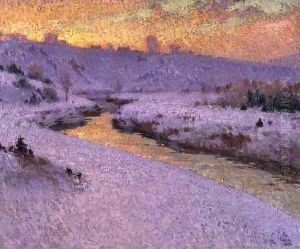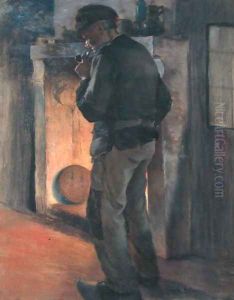Marc Aurele de Roy Suzor-Cote Paintings
Marc-Aurèle de Foy Suzor-Coté, born on April 6, 1869, in Arthabaska, Quebec, Canada, was a distinguished Canadian artist renowned for his paintings, sculptures, and church decorations that vividly captured the essence of Canadian life and landscapes. His artistic journey began under the guidance of local artists, but his ambition and talent soon took him to Paris, France, where he furthered his studies at the École des Beaux-Arts and under notable painters such as Léon Bonnat and Benjamin Constant. This European sojourn was crucial, as it exposed Suzor-Coté to the nuances of Impressionism and Realism, influences that would deeply permeate his work.
Upon returning to Canada in the late 1890s, Suzor-Coté's career flourished. He became a pivotal figure in the Canadian art scene, adept at capturing the changing seasons of the Quebec landscape, the toil of its people, and the drama of light and shadow. His paintings such as 'Les vieilles maisons de Warwick' and 'La gelée blanche de novembre' are celebrated for their vibrant portrayal of rural life and their masterful use of color and light. Beyond painting, Suzor-Coté was an accomplished sculptor, creating evocative bronze pieces that further explored themes of Canadian identity and heritage.
Suzor-Coté's contribution to Canadian art was not confined to his creative output. He played a significant role in the cultural life of his country, promoting Canadian art and artists both at home and abroad. His works were exhibited widely, earning him accolades and recognition, including the prestigious Companion of the Order of St Michael and St George. Despite his international success, Suzor-Coté remained deeply attached to his Quebecois roots, which continued to inspire his work throughout his life.
Marc-Aurèle de Foy Suzor-Coté passed away on January 29, 1937, in Daytona Beach, Florida, but his legacy endures. He is remembered as one of Canada's foremost artists, a pioneer who bridged European art traditions with the Canadian landscape and soul. His body of work remains a testament to his profound connection to the natural beauty and cultural richness of Canada, securing his place as a key figure in the country's artistic heritage.

